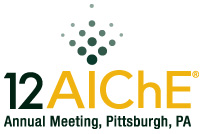

The U.S. Department of Energy’s National Energy Technology Laboratory (NETL) has developed a model to estimate the costs of storing captured CO2. This model includes the range of costs from initial regional geologic evaluation through site characterization, permitting, injection/MVA operations, post-injection site care to final site closure and transfer to long-term stewardship. Differences in storage costs across different geologic formations are driven by two basic factors: (1) injectivity which determines the number of injection wells drilled to accommodate a given rate of CO2 injection, and (2) the volume of CO2 to be stored which determines, per in-situ reservoir parameters, the areal extent of the plume and hence the Area of Review (AoR) of a Class VI well permit. The AoR defines the areal extent of MVA activities which dominates costs during injection and post-injection operations. The basic framework for this model provides costs for compliance with various sections of EPA’s Class VI regulation and Subpart RR of the GHG Reporting Program. Cost analysis at two levels is provided by this model: (1) site specific where the modeler can enter their own reservoir data, and (2) regional costs derived from the model’s geologic database and presented in the form of cost supply curve output data. Within the financial module, the model will solve for the first year breakeven cost to store a tonne of CO2. Another potential CO2 storge reservoir incorporated in this model are oil and gas reservoirs utilized in Enhanced Oil Recovery (EOR) operations. EOR reservoirs are important for their utilization of captured CO2 for additional recovery of original oil in place (OOIP). A test matrix was developed to evaluate this cost model across several simple scenario variations to test for cost sensitivities. For saline reservoirs, scenario variations include: change in time span for site characterization, permitting and post-injection site care; change in application of seismic data acquisition and density of monitoring wells, as well as a change in the number of old wells that require remediation (corrective action). Important cost considerations and modeling scenarios for EOR are the cost of compliance with Subpart RR, conversion to Class VI permits, or concurrent saline storage operations. Both saline and EOR operations will be modeled for change in Financial Responsibility and saline operations will be modeled for change in capital structure. Transportation is the link between capture and sequestration. The test matrix will utilize NETL’s Capture-Transport-Storage (CTS) model to analyze the use of dedicated and network pipelines in various intra and inter-regional CCS scenarios. An important goal here is to assess the cost to store captured CO2 in various basins or regions across the lower 48 states over the next century.
Presenter(s)
Once the content has been viewed and you have attested to it, you will be able to download and print a certificate for PDH credits.
If you have already viewed this content,
please click here
to login.
